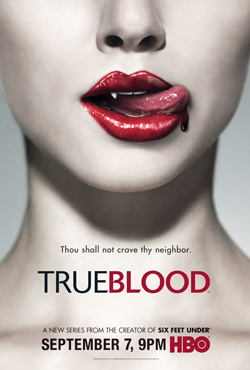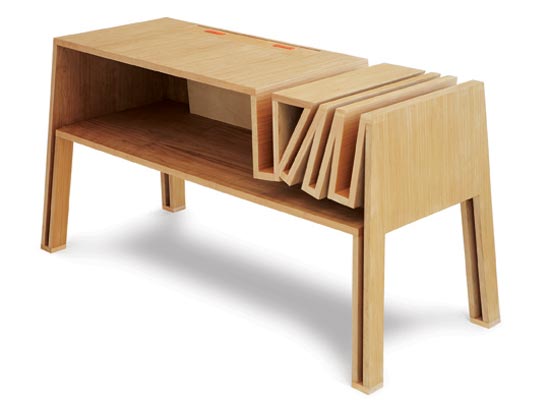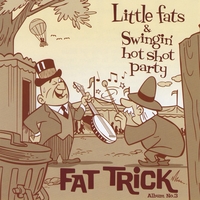
DJ lounge rooms via Germany.
Author Archives: dogpossum
firehouse five
 My desire for the Firehouse Five (specifically this album) has forced me to think, even more seriously (as in, will probably do it) about emusic.
My desire for the Firehouse Five (specifically this album) has forced me to think, even more seriously (as in, will probably do it) about emusic.
This band is in the vein of the New Orleans Jazz Vipers, the Firecrackers and other recreationist bands. Excepting the Firehouse Five are actually from the revivalist period (mostly). I’ve just bought this CD, but I think I could go on and on and on. I know it’s tighty-whitey cultural appropriation, but dang. The quality is good. And, well. You know. I want it. And thinking about music means I don’t have to think about the masses of reading I have left to do.
But the sudden plummeting dollar has meant that buying CDs is expensive, mostly because of the postage. I like to have the liner notes, emusic will hit me with an extra bill each month, but… instant music. Sweet. Cheaper music. Double sweet. I think I will use it for ‘taster’ songs, finalising my departure from itunes, and for albums by newer artists where I don’t need the liner notes. I think I’ll also keep back up copies on CD with copies of the album cover (just in case, and because I’m a bit ob-con).
teaching, dancing and making place space
Only half way through an article on taste (G. Hawkins ‘TV Rules’ UTS Review 4.1 May 1998, pp 123-139), I’m struck by the discussion of the ways in which ‘place becomes space’. How does a room become a ‘living room’, or a house become a ‘home’? Specifically, Hawkins is discussing (in the quote below) the ways in which children living in our homes force us to articulate the ‘rules’ of living in shared space. Or, in line with the discussion she presents, the ways in which articulating these rules gives us the chance to become reflexive about the way place is made into space by use. This isn’t exactly new stuff (this article alone was published ten years ago, and develops Barthes’ even earlier discussion of the cinema as place), but it suddenly seems important to me. Here’s the section that made me think:
Rules, then, are systems of order – they allow us to project ourselves into the world and project the world back to us. Rules are guides for how to act, how to be in t his space. Rules discipline in a productive sense: they produce meaning, they organise, they are creative, they make inhabitation possible. Rules are embodied in things and actions, they communicate. Rules are also specific, they take place in situ, each room is a unique system of rules and a unique network of power because rules and regulatory practices are provisional, they constitute objects for their own practice. And children elicit rules, for Wood and Beck they are the ultimate barbarians, they have to be domesticated and in the process of prescribing rules, adult values and meanings become manifest. Adult order is constituted and so too is the never ending struggle to establish it as dominant (Hawkins 128).
The thing that struck me, here, is the way in which pedagogy – teaching – makes us articulate and become aware of our assumptions about space/place. Teaching in universities forces me to think about the ways the material I am teaching ‘work’ in a broader social and cultural context. The most difficult parts of teaching cultural studies (for me) lie in teaching ‘class’ or ‘power’ or culture as articulation of/space for the negotiation of identity, class, power, etc etc etc.
The part I have trouble with is teaching this stuff in the context of the old school neo-Marxist cultural studies tradition. In that context, this discussion is, ultimately, geared towards social change. Teaching or study or research is not (and should not, it is implied), be neutral. It should be a part of a broader social project. Or, more plainly, activism. For me, one of the ways I justify what I do is by framing it as activism. Women’s studies doesn’t make sense, for me, without feminism.
I am excited by the idea of this stuff as having value or usefulness. It’s not simply ideas or theory in space – it has a job to do. It is a tool. It’s something we can use. Being raised by the sort of people who didn’t tolerate cruelty or injustice (social worker, decent person, animal activist…) has made me particularly aware of my responsibilities as a person. Simply, if I’m going to live here, I have to play nice. I have to do what I can to make things better for other people (and for myself as well). More clearly, I have a responsibility to play nice and be useful and helpful. I am sure there’s some scary gender stuff in there (isn’t that the way little girls are raised? To care, to be useful, to be helpful, to assist? Perhaps I should think more about leading or inspiring caring or begin project which require help?). But I find it makes me feel good to give a shit, and it also gives me purpose; it gives me reason for doing the things I do.
At any rate, teaching cultural studies has been difficult when I’ve been teaching wealthy kids at big, rich unis. I have found myself articulating this stuff in terms of ‘responsibilities’. When I was teaching this stuff to less privileged kids, I found that that approach was just plain bullshit. It became a matter of ‘rights’. This is one of the stickiest sticking places for me, teaching this stuff. And teaching – the breaking down and remaking and exploration of ideas – forces me to become aware of and to engage with my ideas and the ideas of authors at hand.
In another, connected point (where ideas must have practical applications), I’m absolutely struck by the way teaching works (in this context) in dance. I wrote quite a bit in my thesis about institutionalised pedagogy as a way of shaping ideology, or making ideology flesh. I placed it in opposition to vernacular dance practice – or learning on the social dance floor through more osmotic modes. Both are ideologically shaped and shaping practices. But I have trouble with pedagogy as capitalist practice – dance classes as product to be sold and bought… well, when it happens within a broader institutional context. Mostly because ‘selling dance’ on a larger, organised level demands homogeneity, and demands the disavowel of heterogeneity. In other words, it’s difficult to teach dance (in this context) without creating right/wrong binaries. The right way is, of course, the product you are buying. Everything else is wrong, and hence undesirable; you wouldn’t want to waste your money on it. Brand loyalty thus achieved.
But, continuing with this, I’m interested in the way dancers make ‘dance floors’ out of ordinary places. Hawkins refers to the role of emodiment (or bodies) in this process, largely via Barthes and his discussion of the bodily experience of the cinema (and at one point there was a reference to Frith** and taste, and there is of course reference to de Certeau). With dancers, this sense of embodiment is explicit.
The whole notion of ‘floor craft’, for example, where dancers learn (or choose not to demonstrate) the ability to dance ‘safely’ on the floor, not kicking or bumping into other dancers. Floor craft is a story of sociability and communitas, but it is also a story of social power. Which couples have the greatest liberty to ignore these rules? The most advanced. When is the idea of ‘sharing the floor’ set aside? In jam circles, where dancers display their abilities and status.
There are countless other examples. Lindy bombing involves groups of dancers descending on a ‘non dance space’ with music and dancing spontaneously (and often illictly). DJing functions as a way of making a place ‘space’. DJs often speak of the ‘feel’ or ‘vibe’ or ‘energy’ in a room – a palpable, physical emotion and sensation – and the ways in which they manipulate that experience. The very act of dancing, therefore, not only creates space, but – far more importantly – creates an emotional, social space as well. Sharing a dance floor is about engaging in a non-verbal social discourse which is all about the body. In fact, without the body, the space collapses back into place. It might carry echoes, but it is, essentially, nothing without the dancers.
I’m suddenly reminded of way I think about DJing the first set of the night: I imagine it as ‘warming’ the room. Sometimes this is a physical warming, but most of the time it’s a social, ideological, emotional, cultural, creative warming. I need to build the vibe or energy before I can manipulate it.
And to bring all this back to rules and articulating rules and teaching… dance classes are one step in the process of socialising dancers and teaching them how to make space out of place. I could argue that formal dance classes are in fact directly contributing to the breaking down of space – busting the vibe – because they insist on hierarchies and formalised, articulated modes of communication, but I’m not sure it’s that simple. I do know, though, that the discourse of formal, institutional, commodified pedagogy is an impediment to the process of making dance places spaces. This is because teaching is about verbalising dance and about shifting the way we ‘think’ dance from the body to the brain and language. And any dancer will tell you that the sweetest, most satisfying moment of dancing comes when you stop thinking or articulating and become thoroughly and completely in your body.
Roland Barthes 1989 “Leaving the Movie Theatre†The Rustle of Language Uni of California Press, Berkeley, pp 345-249.
Michel de Certeau 1984 The practice of everyday life University of California Press, Berkeley, pp. xi-xxiv.
Simon Frith 1996 Performing Rites Oxford UP, London.
Gay Hawkins ‘TV Rules’ UTS Review 4.1 May 1998, pp 123-139
i’m not saying that we should all be mad-crazy-mr-chips hippy teachers
So I’ve been thinking a lot about sessional teaching and it’s advantages/disadvantages. On one hand, I’m utterly convinced that it’s exploitative – it is the grape picking, the piece-working of the education industry. Working conditions are not good. The pay-per-hour rate seems good, but isn’t really a return due the vast amounts of time tutors spend preparing for classes. While there’s the argument that repeat-teaching is more cost-effective for tutors, in practical career terms, there is no reason beyond professional networking to teach a subject more than once – it’s not going to look terribly good on your resume. Most tutors don’t have an office on campus – they usually share space with other tutors. I use a conference room. This has some serious drawbacks: students are less likely to drop in for assistance (an advantage for full time staff, but no good for students). Staff are unlikely to drop in for a chat, to foster collaborative relationships (a topic of great issue to employers) or to provide a little incidental mentoring. Most sessional tutors, though they may take the time to peruse and pilfer the departmental stationary cupboard (I wish I knew where mine was), are more likely to spend their money on printer toner, photocopying paper, pens and bandwidth on teaching. We shall not even begin to discuss the computer facilities available to sessional teaching staff. And let’s not even approach the difficulties of working in an industry with mentors and employers and full time colleagues who are increasingly depressed, frustrated and angry with their own working conditions (I have a theory: sessional staff are mentored in dissatisfaction as much as teaching techniques, particularly as most out-sourced tutors are hired by the most desperate and overworked staff).
So sessional teaching is not a particularly excellent position for the tutors. I’m not even sure it’s a good deal for employers: casual staff who may at whim depart for sunnier climes, casual staff who, while experienced in sessional teaching may not have the research skills, interests or CV of more permanent teachers.
I have heard a number of arguments for sessional teaching – casualised teaching.
1. One can depart for sunnier climes on a whim. Hm. I think that I would trade secure employment for the suspect advantages of uprooting and repositioning.
2. One can pick and choose staff members to teach with, thus securing some sort of professional network which extends beyond one’s supervisor or even one university. Again, I’m not convinced. Most of the ‘early career academics’ in my position teach – or have taught – at more than one campus, in one city or more. This does give you the opportunity to meat more staff, but it also usually means that the staff you’re meeting are incredibly stressed and have little time or energy for mentoring or … whatever else it is you’re supposed to get out of networking. Teaching across universities also prevents you digging in at one institution – making a little nest, really cultivating proper, working mentoring relationships and contacts and perhaps setting yourself up for collaborative research projects or even – gold of golds – research funds.
I can’t really think of any other reasons which are even half as convincing.
I have been trying to convince myself that there are avenues for some sort of tactical exploitation of my own exploitation. I’m not really buying it, I’m afraid. But what have been the advantages of teaching across so many universities and departments?
1. I’ve been able meet and work with some amazing staff. All of these, but 2 (in the four universities I’ve taught at) have been middle aged woman who I have admired, respected and ultimately wanted to be. But I’ve also seen how gender works in university heirarchies. It is women (and the odd reconstructed bloke) who end up with the stooge’s share of heavy-teaching loads. And while they’ve been wonderful to meet and work with (and certainly fabulous in terms of the old girls’ network), I often wonder if it might be a good idea to attach myself to the types of academics whose ambition and general cutthroatedness have helped them avoid the need for sessional assistants. But then, would I want to work with that type of person?
2. I’ve learnt an awful lot. I’ve taught pretty much the same topics and readings and ideas, and had taught the same stuff across the five universities I’ve been involved with. But each department has had a different name: English department; Cultural studies program within an English department; Media Studies program; Communications program; Media within an English, Media and Performing Arts program. It’s been fascinating to see how each of these programs borrow from the same pool of ideas to produce and construct a ‘program’ – an ivory tower, a network of ideas, an ideology (both research and pedagogic) – which is quite unique. And reflects the professional, personal and intellectual interests and needs of the staff involved.
I am utterly unconvinced that all that institutional positioning and course restructuring makes any difference. People like me are still teaching the same things to young people, no matter what the name of the subject/course/degree, the CVs of the convening staff or the publishing profiles of the departmental heads. While the course convenors might intend a new and interesting and cutting edge subject, in practice their financial and employment restrictions necessitate using the same sessional stooges. And it is these stooges who actually do most of the teaching in universities. And course convenors beware: we are constantly negotiating our relationships to what you’re teaching, and there’s a very, very, very good (as in 100%) chance we’re adjusting and tailoring your subject to meet our own intellectual, personal and political goals*.
And it is these stooges who are steadily acquiring mad teaching skills (well, hopefully, but certainly not definitely. Or even possibly), but who ultimately regard sessional teaching as a step to somewhere else, a momentary aberration from a ‘professional’ career in academia. One which does not involve teaching.
But I have learnt a lot. I’ve seen some very good teaching in action, and I’ve seen some very bad. I’ve done my share of each (though I’d hope for a little more of the former, it’s impossible to gauge my own professional development in such an impermanent and constantly-shifting context). I’ve used some excellent readers (most of which could simply be reproduced as some sort of ‘cultural studies in Australia bible’, with a few addenda for localised interests or nods to administrative reshuffles and demands for ‘more digital content’ or ‘more practical applications’). I’ve also managed to keep up with current research – filtered down through the staff I’ve worked with, and occasionally stimulated by a particularly interesting lecture or ‘optional reading’.
3. I’ve had the chance to work with hundreds and hundreds of really bright, really motivated and interested students. Just when I think I hate teaching and never want to do it again, I have a class where someone says something so interesting it’s on my mind for days. Students bring fresh minds to familiar readings, they bring fresh ideas to familiar discourses, and they bring – in many cases – young approaches to increasingly older institutions. Many of the assumptions staff make about viewing habits or media consumption practices or just plain everyday activities are critiqued and challenged by students simply describing what it is they watch on television, where it is they go to eat and how it is they communicate with their friends, families and teachers. I love them.
I’m also struck by just how much many of the overworked staff I deal with love them. They just plain love their stoods. And they take their teaching responsibilities very seriously. Perhaps the hardest thing to see is a staff member bitching about their work load on one hand, and revealing committed, passionate caring for their students and delight in the teaching process on the other. I think that many of these people feel, quite profoundly, that teaching is important, an idea which is particularly unpopular in academia these days.
I would, quite happily, commit myself to a couple of years of doing nothing but teaching undergrads. I’d like to be set up in an office with a computer and a library and a bunch of stationary, and told to teach a bunch of subjects. It’d kick my arse, but I’d really like the opportunity. Even though – as a friend said half in jest the other day – [expressing that desire] ‘is career suicide’. I think that this is perhaps the saddest part of sessional teaching – seeing people who love teaching, who love sharing ideas and listening to students develop an interest in – and passionate attachment to – ideas feel guilt about or some sort of reticence to admit this. I’m not saying that we should all be mad-crazy-Mr-Chips hippy teachers. But I am saying that it seems the worst thing about sessional teaching is that you are faced with learning that teaching is a waste of time, is frustrating, is miserable and just plain bad news. Not terribly encouraging when you’re trying to bust on into this industry.
4. My teaching has inspired new ideas and new plans for papers and research projects which other forms of academic engagement (of which I have precious few) do not. I’m simply inspired by the process of reading and re-reading canonical texts, and then having to find ways of letting students find their own ways to fall in love or in fascination with these ideas. It’s challenging to find class activities or interesting learning and teaching games which make these ideas a) relevant, and b) just plain fun.
I think that the most important part of teaching media and cultural and communications and gender studies is to help students find a way to make this material relevant to their own everyday lives, and to find ways to just plain enjoy playing with it. I mean, de Certeau is fun. He’s dodgy, and his stuff falls, down, but it’s fun to find ways to explore and apply his ideas. And it’s also really, really fun to see students then test out the use-value of this stuff, and to begin to articulate their reservations about concepts. I think this stuff should have some sort of use-value, even if that use is only as an intellectual game, just for the sake of playing.
… but, anyway, I have to end by saying that I’m not terribly hopeful about my future in academia. There aren’t enough jobs. I can’t publish a book (I amn’t really convinced it’s actually all that useful a process anyway). No one gives a crap about dance. Working in universities is generally pretty shit. Perhaps it is better just to stick with sessional teaching, rather than committing myself – so emotionally and so finally – to a full time career in it?
* Some of us are not ready to be postfeminists just yet. Nor are we convinced that newspapers, television, magazines and radio are ‘heritage’ media.
oh man

Glen was right. After ep 3, True Blood is really neat.
It’s addictive. I think I need to negotiate the politics, but for now, I’m just loving it. I Need. To. Watch. It. All. The. Time.
Other programs I’m watching:
- Dawson’s Creek, season 2 (from the beginning, a consecutive viewing). Increasingly intolerable;
- Sanctuary (kind of dumb);
- season 1 of Buffy (if ever you feel a little oppressed by the patriarchy, Buff will help you out. But only seasons 1 and 2. Then it gets too dark);
- season 4 of The Wire (double awesome).
Soon:
- Deadwood from the beginning again.
- Sarah Connor Chronicles.
- Some other stuff.
Cinema atm:
sweet eddie condon (and friends) action
(props to Plog for finding this)
in honour of aquaria

This contemporary aquariums article reminded me of my trip to the Melbourne aquarium (click that image to the left there to see huge jelly blubbage). We went to the Sydney one recently, and I think I prefer the Melbourne aquarium; the Sydney aquarium’s information posters and stuff around the actual fish was quite crap. The Museum kicked both their arses for fully awesome awesomeness.
extremely awesome dj

canadian company cocoon created a dj table for drink company red bull.
made from wood the table consists of slotted cutouts. the space can be
used to store vinyl records and also provides ventilation for the modern
dj’s laptop.
(from designboom – you can follow links to the designer, coccoon, but they have a skanky flash site, so no direct-linking)
little fats and swingin’ hot shot party
 Hot Japanese swing. Yes. You can listen to it here.
Hot Japanese swing. Yes. You can listen to it here.
I am always a sucker for a contemporary band doing skankin’ old timey jazz. Most of the best bands seem to be punker kids. Because, really, that’s what that olden days hawt jass was all about. Sex and drugs and rock and roll.
oh man
I suck. Those last two posts are really painful.
Urk.
